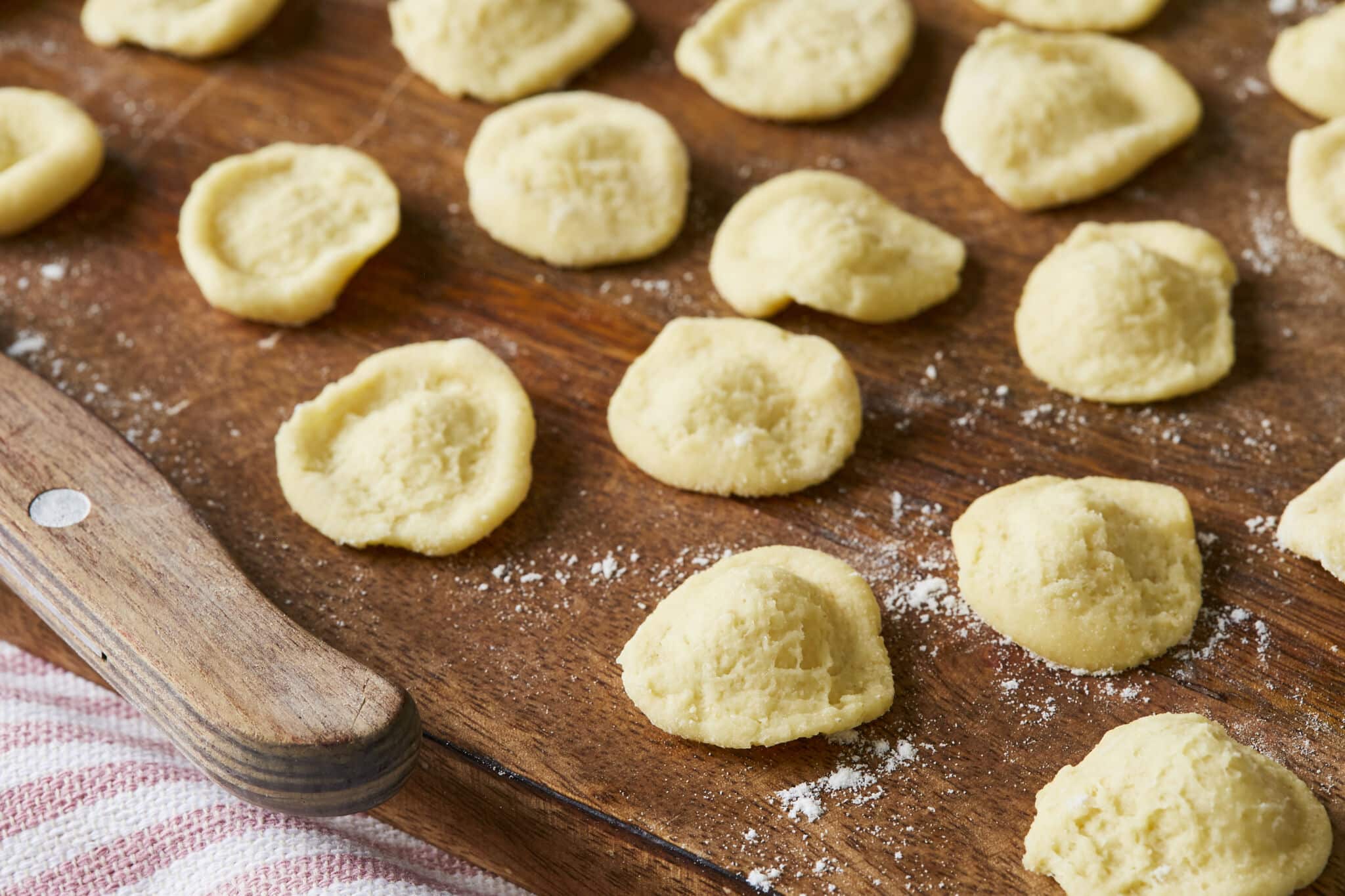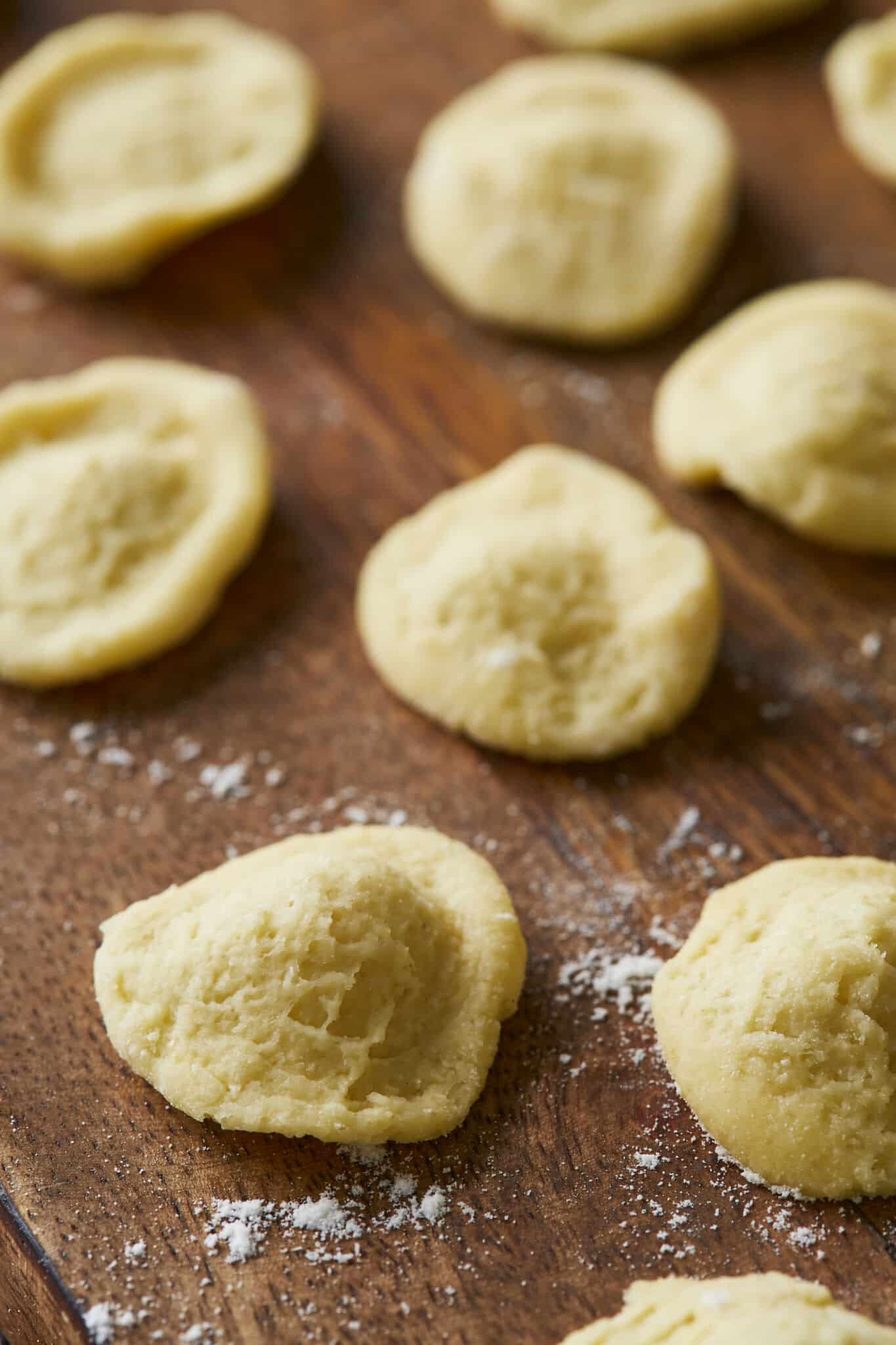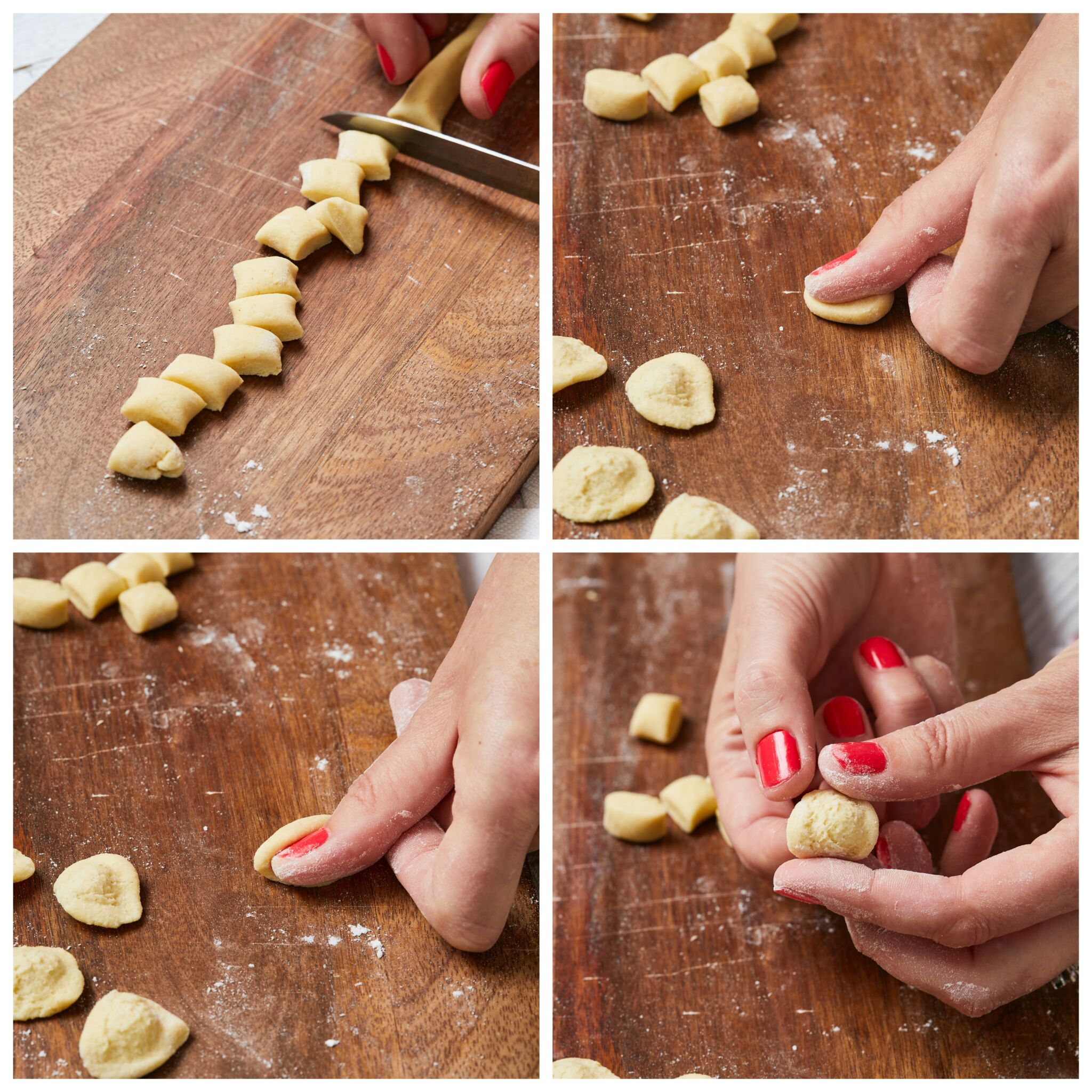Hi Bold Bakers! WHY YOU’LL LOVE THIS RECIPE: Orecchiette, a cup-shaped pasta, gives you a delightful eating experience with its unique shape and versatility. It gets its rich, wheaty flavor from semolina flour, and is the ideal vessel for catching every drop of delicious sauce. This easy Orecchiette recipe will give you a dish of one of the most delicious, hearty, types of semolina pasta in no time. With my step-by-step instructions, you’ll be shaping orecchiette like a pro, and savoring your own fresh homemade pasta! Already have an account? This orecchiette pasta is made from my master Semolina Pasta Recipe. I can’t wait to share with you each variation of it and be sure to check out Busiate (spiral), Gnocchetti (ridged small elongated shell), Trofie (twisted pasta), Foglie (olive leaf), and Cavatelli (mini hot dog bun).
Table of Contents
What is Orecchiette Pasta
The name of this cup-shaped pasta translates to “little ears.” Orecchiette originated in the region of Puglia in Southern Italy in the 12th century. There’s even an annual festival celebrating the local pasta shape! The women of the region traditionally shaped their pasta by using their thumbs to press pieces into a cup shape. Try it with broccoli rabe, kale, or other bitter greens and fava beans sauteed with oil and garlic, and red pepper flakes, or with meat sauce, or tomato sauce with little meatballs (Polpette con Orecchiette). Any way you top the orecchiette, it will taste delicious!
Tools You Need
Food processor or bowl Measuring cups and measuring spoons Work surface, such as a wooden cutting board Sturdy butter knife Baking tray
Key Ingredients and Why
Semolina flour Semolina flour is made from hard durum wheat, the species of wheat used to make pasta. This high gluten, high protein (13%) content gives semolina flour more durability and elasticity. That helps the pasta keep its shape while cooking and gives your pasta that wonderful al dente texture. It has a coarse, grainy texture, and is pale yellow in color from the carotenoids, the natural pigment found in durum wheat as well as in carrots and sweet potatoes.
How to Make Orecchiette Pasta
Make the dough from my 2-Ingredient Semolina Pasta Recipe. To shape the pasta: Divide the dough into quarters and work with one section at a time. Keep the rest covered so it doesn’t dry out. Roll the dough into a rope and cut into 1/3 inch (1 cm) pieces. Either with your thumb or with the aid of a butter knife, fashion each piece into a rounded concave shape (see additional instructions and photos above). As soon as you finish a piece, place it on the semolina-dusted baking tray. Dry the pasta: To ensure the pasta keeps its shape while cooking, allow the pasta to completely air-dry for 12-24 hours. Cook the pasta: When ready to serve, cook your pasta in salt water for flavor and to prevent it from sticking). It takes only 6-10 minutes so it’s great for a weeknight meal.
Can I Make Orecchiette Pasta in Advance?
After the orecchiette is completely air-dried, it can be stored at room temperature in an airtight container for eight weeks.
How to Store Orecchiette Pasta
Store leftover cooked orecchiette in the refrigerator for up to three days. Drizzle a little olive oil on the pasta to keep it from sticking. Or allow the dough to dry in a single layer on the baking tray for several hours before transferring to an airtight container to be stored at room temperature for up to 8 weeks. Alternatively, freeze raw fresh semolina pasta for up to eight weeks.
Important Pasta Drying Information
Drying pasta correctly and thoroughly before storing it away is a very important step: if not done correctly the stored pasta will go moldy. Because it will be held at room temperature and not in the fridge, removing all the moisture is key to ensuring the safety and longevity of your pasta. Start by tossing the orecchiette with a small amount of semolina to keep the dough from sticking. Next, lay the shapes in a single layer on a baking sheet. You will need to let your pasta completely air-dry. This can take anywhere from 12-24 hours or longer, depending on the temperature and humidity of your kitchen. In hot countries, this step can be faster by putting the pasta in the sun which is what I do.
Can I cook the pasta without drying it first?
The drying ensures that the orecchiette will keep its shape while cooking, and it also might be sticky if you try to boil it without drying it first.
Can I use my food dehydrator to dry my orecchiette?
Pasta is generally air-dried, however, you should be able to do it in a single layer in an oven or dehydrator at 135°F for about four hours, checking it at two hours to test it. The timing depends on the thickness of the pasta.
How will I know if my orecchiette is properly cooked?
Cook the pasta until plump and expanded, and the center no longer looks chalky or raw.
Gemma’s Pro Chef Tips
Make this pasta with my eggless 2-Ingredient Semolina Pasta Recipe. This dough dries out quite easily so be sure to always keep the dough covered in an airtight container or in plastic wrap or a plastic bag when you are not working with it. Make sure to shape this pasta on an un-floured surface. You will need a bit of grip to the work surface. That being said, if your dough starts sticking to your thumb or knife, you can use a tiny touch of flour (but not on the work surface). It is important to let the dough dry out before you cook it so that it holds its shape. The dough varies greatly in cooking times, depending on how thin the pieces are. Be sure to check frequently but also cook thoroughly. Handmade dough won’t get mushy very quickly and might take longer to cook than store-bought varieties.
More Homemade Pasta Recipes
The Best Lasagna Recipe (100% From Scratch) 3-Ingredient Homemade Gluten-Free Pasta 3-Ingredient Homemade Wholewheat Pasta Hand-Rolled Pici Pasta Chocolate Pasta with Hazelnut Sauce






